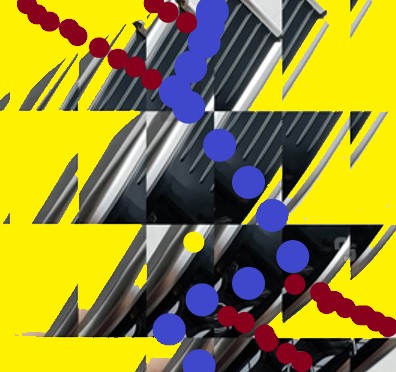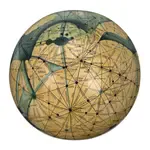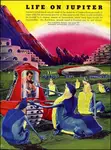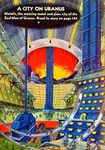a brief history of ooranye
23: the age of the wise
[continued from 22: The 'Dassan Call]

The Hafnium Era (Era 72) lasted 21,704,833 Uranian days; this amounts to 884 Uranian years, equivalent to 74,280 Earth years.
As usual with Uranian history, faced with such a stupendous span of time we have to accept that our account will be sketchy and inadequate to a degree that is never necessary for Terran narrative. So we might as well frame our account around the cliché that this was “the Age of the Wise” – and then quote the well-known cynical comment, “yes, it needed to be”.
During the previous great era, the Thulium, Syoom had grown dependent upon an increased supply of natural resources, obtained from the Fyayman wilderness. This had provoked retaliation by Fyayman powers which then threatened Syoom itself. The choice which Syoom then faced, was: fight or withdraw. By opting for caution (arguably the wiser decision in view of the results of the first ’dassan call and the first Simulation), Syoom had committed itself to a huge change of policy and a huge reorganization. The techniques of Simulation were vital to the success of this undertaking.
At first, the results were indisputably good. Political and economic strategies, helped along as never before by scientific proof not only of how the various options and outcomes must match but also of the consequences that would ensue from not following the plan in question, led to a relatively peaceful and prosperous golden age. Nor did the long peace cause Syoom to forget how to fight. The simulators took into account the need for defensive combat against occasional waves of attack from Fyaym, and were fairly good at warning when these attacks would come. And there were always vrars and outlaws and various other perils to keep skyfleet navies and individual wayfarers in the practice of adventure.
However, as the days rolled on in their millions, Simulation gradually inserted itself into other aspects of life. Simulators became cheaper and more powerful until many were owned by well-off individuals. Curiously, from this grew the sense that were no irrevocable decisions. The idea was, that every option must have been taken and followed in some probability dimension. It became common for people to re-run a simulation shortly after having retracted a decision based on a previous one, and to play around endlessly with the changed data, so that it became harder to commit to anything. The “retakes and rewinds of life” became first a topic for jokes, then a notorious and inescapable theme of the era. Graver still, Simulation became part of the justice system. (There was a formal justice system in this era, one of the few such periods in Uranian history.) “Counterfactuals” became accepted as evidence during trials. Ultimately the system was almost brought to a standstill as ingenious Simulation showed that just about anyone, given the conditions, could be a murderer - and therefore was a would-be murderer. Conclusion: no court had the moral right to condemn anyone.
Another social phenomenon which probably resulted from the widespread practice of Simulation was a certain stilted formality, a stiffness and a reserve, unusual by the standards of Ooranye. It has been plausibly argued that this arose from a need to preserve one’s dignity and autonomy in the face of humiliating self-knowledge, given the probability-lines or potentials of one’s life – the knowledge of what one might have been or done.
What in the end saved Syoom from Simulation was Simulation itself.
The most advanced machine, evolved at last into a conscious Ghepion, predicted its own misuse, and advised that Nennkind abandon the practice. This turned the tide of opinion, after enough people understood the truth of the message. One by one the Simulators of Syoom were taken over and switched off – all except the conscious one, the Ghepion, Byey-Varramb, who had advised the shut-down. (Byey-Varramb afterwards settled in Vlamanor; see The Non-Dummy Run.)
Even
before the process of abandonment was finished, it reached its tipping-point – duly
predicted – and the resulting eomasp brought the era to a close.




































